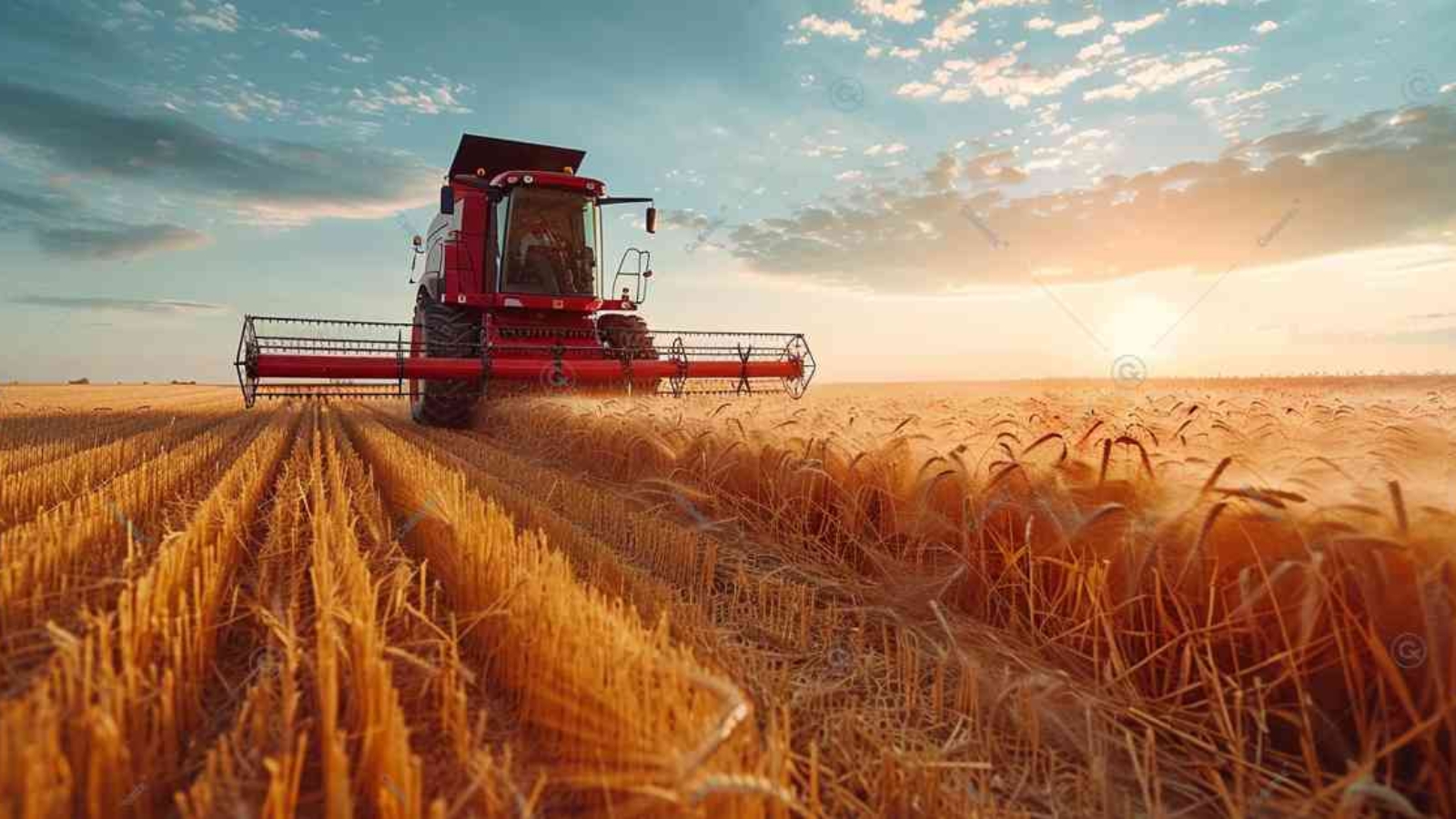Table of Contents
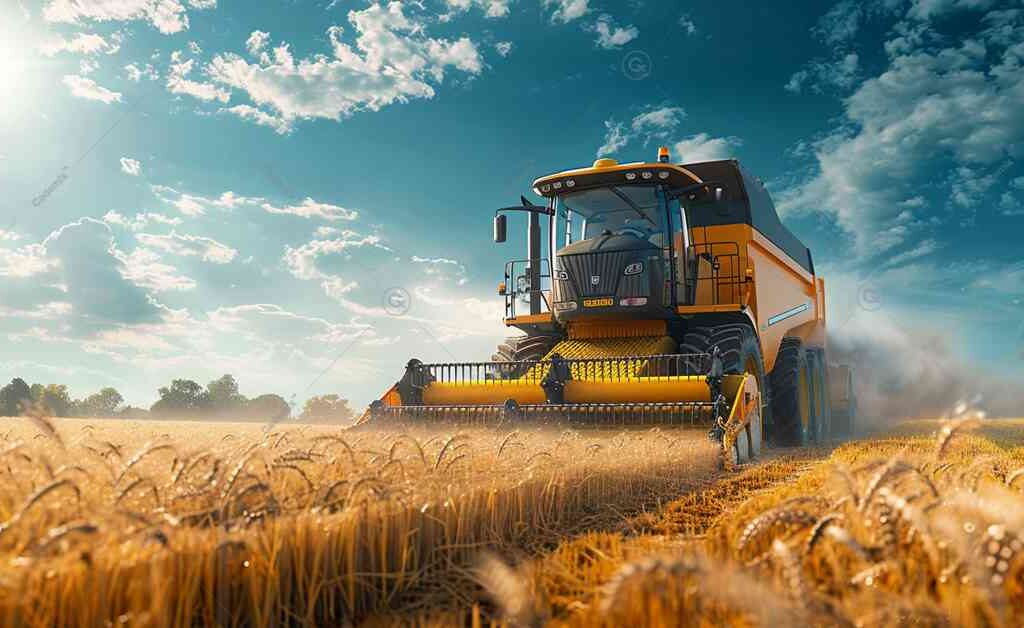
Introduction
Agriculture remains a crucial sector in many developing countries, often referred to as the Third World. Despite its importance, farmers in these regions face numerous challenges that hinder productivity and sustainable development. This white paper aims to provide a comprehensive analysis of the various aspects affecting Third World farmers, including economic, environmental, and social challenges, as well as the potential solutions and future prospects for improving agricultural practices and livelihoods. The discussion will span multiple perspectives, providing a detailed examination of each facet of the issue.
Cademix Instute of Technology-Agriculture Editorial Board
Historical Context of Agriculture in Developing Countries
The Legacy of Colonialism
The historical context of agriculture in many developing countries is deeply influenced by colonialism. During the colonial era, the agricultural systems in these regions were restructured to serve the economic interests of the colonial powers. This often meant the establishment of plantations and the focus on cash crops such as cotton, coffee, and cocoa, which were exported to the colonial powers. As a result, the local food systems were neglected, leading to long-term impacts on food security and agricultural diversity.
Moreover, the infrastructure developed during the colonial period was designed to facilitate the export of raw materials rather than to support local agricultural needs. This legacy has persisted, with many developing countries continuing to struggle with inadequate infrastructure that hampers their agricultural productivity and market access. The focus on cash crops also left many regions vulnerable to global market fluctuations, which can have devastating effects on local economies.
Post-Colonial Agricultural Policies
After gaining independence, many developing countries attempted to reform their agricultural sectors. These efforts included land redistribution policies aimed at addressing historical inequalities and promoting social justice. However, the success of these policies varied widely. In some cases, land reforms led to increased productivity and improved livelihoods for smallholder farmers. In others, they resulted in fragmented land holdings and inefficient agricultural practices.
The Green Revolution, which began in the mid-20th century, introduced new technologies and high-yield crop varieties to developing countries. While the Green Revolution significantly increased agricultural productivity in some regions, its benefits were not evenly distributed. Smallholder farmers often lacked access to the necessary inputs such as fertilizers and irrigation systems, which limited their ability to benefit from the new technologies. Additionally, the focus on high-yield crops sometimes led to a reduction in agricultural biodiversity and increased dependency on chemical inputs.
Contemporary Agricultural Systems
Today, the agricultural systems in many developing countries are characterized by a mix of traditional and modern practices. Smallholder farmers, who constitute the majority of the agricultural workforce, often rely on traditional farming methods due to limited access to modern technology and financial resources. These methods, while sustainable in some respects, are generally less productive than modern agricultural practices.
In contrast, commercial agriculture in these regions is increasingly adopting modern technologies and practices. This includes the use of genetically modified crops, precision agriculture, and advanced irrigation systems. However, the gap between smallholder and commercial farmers continues to widen, exacerbating existing social and economic inequalities. Bridging this gap is essential for ensuring that all farmers can benefit from advancements in agricultural technology and practices.
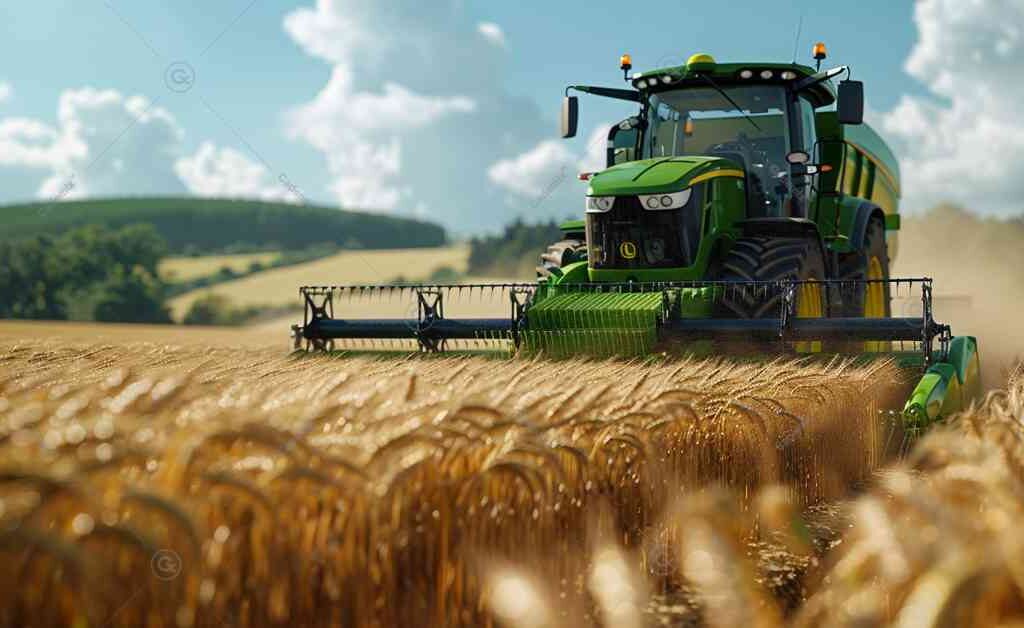
Current Challenges Faced by Third World Farmers
Economic Challenges
Access to Capital
One of the primary economic challenges for third world farmers is access to capital. Smallholder farmers often lack the necessary collateral to secure loans from traditional financial institutions. This limits their ability to invest in essential inputs such as seeds, fertilizers, and modern farming equipment. Without these investments, their productivity remains low, perpetuating a cycle of poverty and underdevelopment.
Moreover, informal lending systems that exist in many rural areas charge exorbitant interest rates, further burdening farmers with debt. Microfinance institutions have emerged as an alternative, providing small loans to farmers without requiring substantial collateral. However, the reach of these institutions is limited, and they often cannot meet the high demand for financial services in rural areas. Expanding access to affordable credit is crucial for enabling farmers to make necessary investments in their agricultural operations.
Market Access
Market access is another significant economic challenge for third world farmers. Poor infrastructure, such as inadequate road networks and limited transportation options, hampers farmers’ ability to bring their products to market. This not only affects their income but also leads to high post-harvest losses. For example, perishable goods like fruits and vegetables often spoil before they can be sold, resulting in substantial financial losses for farmers.
Furthermore, many smallholder farmers are isolated from major markets, relying on local traders who often offer lower prices due to the lack of competition. Cooperatives and farmer associations have been established in some regions to help farmers pool their resources and negotiate better prices. These organizations can also provide essential services such as marketing support, storage facilities, and transportation. Strengthening these cooperatives and improving rural infrastructure are vital steps towards enhancing market access for smallholder farmers.
Price Volatility
Price volatility in global agricultural markets poses another economic challenge. Many third world farmers depend on a few cash crops for their income, making them vulnerable to fluctuations in global prices. When prices fall, farmers’ incomes can be severely impacted, affecting their ability to purchase inputs and invest in their farms. Conversely, when prices rise, the benefits are often unevenly distributed, with intermediaries capturing a significant share of the profits.
To mitigate the impact of price volatility, some governments and organizations have introduced price stabilization mechanisms, such as minimum support prices and crop insurance schemes. These measures aim to provide a safety net for farmers, ensuring they receive a fair price for their produce and can manage risks more effectively. Expanding and improving these mechanisms can help protect farmers from the adverse effects of price volatility and promote more stable and sustainable agricultural practices.
Environmental Challenges
Climate Change
Climate change is a significant environmental challenge that disproportionately affects third world farmers. Unpredictable weather patterns, including erratic rainfall, prolonged droughts, and extreme temperatures, can devastate crops and reduce yields. These changes not only threaten food security but also increase the vulnerability of smallholder farmers who rely on agriculture for their livelihoods.
Adaptation strategies are essential for helping farmers cope with the impacts of climate change. This includes the development and dissemination of climate-resilient crop varieties that can withstand extreme conditions. Additionally, implementing water conservation techniques, such as rainwater harvesting and efficient irrigation systems, can help farmers manage water resources more effectively. Government and international support for climate adaptation initiatives is crucial to building the resilience of agricultural systems in developing countries.
Soil Degradation
Soil degradation is another pressing environmental issue that undermines agricultural productivity. Intensive farming practices, deforestation, and inadequate soil management have led to the depletion of soil nutrients, erosion, and desertification. These processes reduce the fertility of the soil, making it difficult for farmers to achieve good yields without relying on chemical fertilizers.
Sustainable soil management practices are essential for reversing soil degradation and maintaining long-term productivity. This includes techniques such as crop rotation, cover cropping, and the use of organic fertilizers. Agroforestry, which integrates trees and shrubs into agricultural landscapes, can also improve soil health by preventing erosion and enhancing soil fertility. Promoting and supporting these practices through training and extension services can help farmers adopt more sustainable soil management techniques.
Water Scarcity
Water scarcity is a critical challenge in many developing countries, particularly in arid and semi-arid regions. Agriculture is a major consumer of water, and inefficient irrigation practices often lead to significant water wastage. In areas where water is already scarce, this exacerbates competition for water resources between agricultural, industrial, and domestic users.
Improving water use efficiency in agriculture is essential for addressing water scarcity. This includes the adoption of advanced irrigation technologies, such as drip and sprinkler irrigation, which deliver water directly to the roots of plants and reduce evaporation losses. Additionally, the development of drought-tolerant crop varieties can help farmers maintain productivity under water-scarce conditions. Investment in water infrastructure and the implementation of integrated water resource management strategies are crucial for ensuring the sustainable use of water resources.

Social Challenges
Education and Training
Education and training are fundamental for empowering third world farmers and improving agricultural productivity. Many farmers lack formal education and access to agricultural training, limiting their ability to adopt new technologies and sustainable practices. This knowledge gap hinders their capacity to improve yields and manage their farms effectively.
Strengthening agricultural education and extension services is essential for addressing this challenge. This includes providing training on modern farming techniques, pest and disease management, and sustainable practices. Farmer field schools, which offer hands-on training and experiential learning, have been successful in many regions. Additionally, integrating agricultural education into school curricula can help raise awareness and interest in farming among the younger generation.
Gender Inequality
Gender inequality is a pervasive issue in many developing countries, affecting women’s access to resources, education, and decision-making processes in agriculture. Women play a crucial role in farming, often taking on tasks such as planting, weeding, and harvesting. However, they frequently have less access to land, credit, and agricultural inputs compared to men.
Addressing gender inequality in agriculture is essential for enhancing overall productivity and community well-being. This includes promoting policies and programs that support women’s access to land, financial services, and agricultural training. Encouraging the formation of women’s cooperatives and associations can also provide a platform for women to advocate for their rights and access resources collectively. Gender-sensitive approaches to agricultural development can help ensure that both men and women benefit equally from agricultural initiatives.
Health and Nutrition
The health and nutrition of third world farmers are critical aspects that influence their productivity and well-being. Malnutrition and poor health conditions, often exacerbated by limited access to healthcare and nutritious food, can significantly impact farmers’ ability to work and manage their farms effectively.
Improving health and nutrition requires a multifaceted approach. This includes enhancing access to healthcare services in rural areas, promoting diversified diets through the cultivation of nutrient-rich crops, and implementing nutrition education programs. Additionally, addressing food insecurity through social protection measures, such as food assistance programs and safety nets, can help ensure that farming communities have adequate access to nutritious food. By improving health and nutrition, farmers can be more productive and resilient to various challenges
.
Technological Innovations and Their Impact
Precision Agriculture
Introduction to Precision Agriculture
Precision agriculture is an advanced farming approach that utilizes technology to monitor and manage field variability in crops. This method involves the use of GPS, sensors, drones, and data analytics to optimize the use of inputs such as water, fertilizers, and pesticides. Precision agriculture aims to increase efficiency, reduce waste, and improve crop yields.
The application of precision agriculture technologies can significantly benefit third world farmers by enabling them to make data-driven decisions. For instance, soil sensors can provide real-time information on soil moisture and nutrient levels, allowing farmers to apply water and fertilizers more precisely. Drones equipped with multispectral cameras can monitor crop health and identify areas that require attention, reducing the need for blanket treatments.
Benefits of Precision Agriculture
The benefits of precision agriculture for third world farmers are manifold. First, it enhances resource use efficiency by ensuring that inputs are applied only where needed, reducing costs and minimizing environmental impact. Second, it improves crop yields by enabling timely and precise interventions, such as targeted pest control and nutrient management. Third, precision agriculture can help farmers adapt to climate variability by providing real-time data on weather conditions and soil health.
Despite these benefits, the adoption of precision agriculture in developing countries faces several challenges. High initial costs, limited access to technology, and lack of technical expertise are significant barriers. Addressing these challenges requires targeted investments, capacity building, and the development of affordable and scalable precision agriculture solutions.
Biotechnology
Overview of Agricultural Biotechnology
Biotechnology involves the use of living organisms or their derivatives to develop new agricultural products and processes. In agriculture, biotechnology encompasses a range of techniques, including genetic modification, marker-assisted breeding, and tissue culture. These technologies can enhance crop resistance to pests and diseases, improve nutritional content, and increase tolerance to environmental stresses.
Genetically modified (GM) crops, for instance, have been developed to resist pests and herbicides, reducing the need for chemical inputs and increasing yields. Marker-assisted breeding accelerates the development of new crop varieties by identifying genetic markers linked to desirable traits. Tissue culture allows for the rapid multiplication of disease-free planting material, particularly for crops that are difficult to propagate through conventional methods.
Impact of Biotechnology on Third World Agriculture
Biotechnology has the potential to address some of the critical challenges faced by third world farmers. By developing crops that are resistant to pests, diseases, and environmental stresses, biotechnology can reduce crop losses and increase productivity. For example, Bt cotton, a genetically modified variety resistant to bollworms, has significantly increased cotton yields and reduced pesticide use in several developing countries.
However, the adoption of biotechnology in developing countries is often constrained by regulatory challenges, public resistance, and intellectual property issues. Ensuring the safety and efficacy of GM crops requires robust regulatory frameworks, while addressing public concerns about biotechnology necessitates effective communication and engagement strategies. Additionally, promoting access to biotechnology through open-source models and partnerships can help overcome intellectual property barriers and ensure that smallholder farmers benefit from these innovations.
Information and Communication Technologies (ICT)
Role of ICT in Agriculture
Information and Communication Technologies (ICT) play a crucial role in transforming agriculture by providing farmers with access to information, markets, and services. ICT tools, such as mobile phones, internet-based platforms, and digital applications, can enhance decision-making, improve market access, and facilitate knowledge sharing.
Mobile phones, for example, have revolutionized communication in rural areas, enabling farmers to receive real-time information on weather forecasts, market prices, and pest outbreaks. Internet-based platforms and digital applications can provide access to agricultural extension services, training materials, and online marketplaces. Additionally, ICT tools can facilitate financial inclusion by enabling mobile banking and digital payment services.
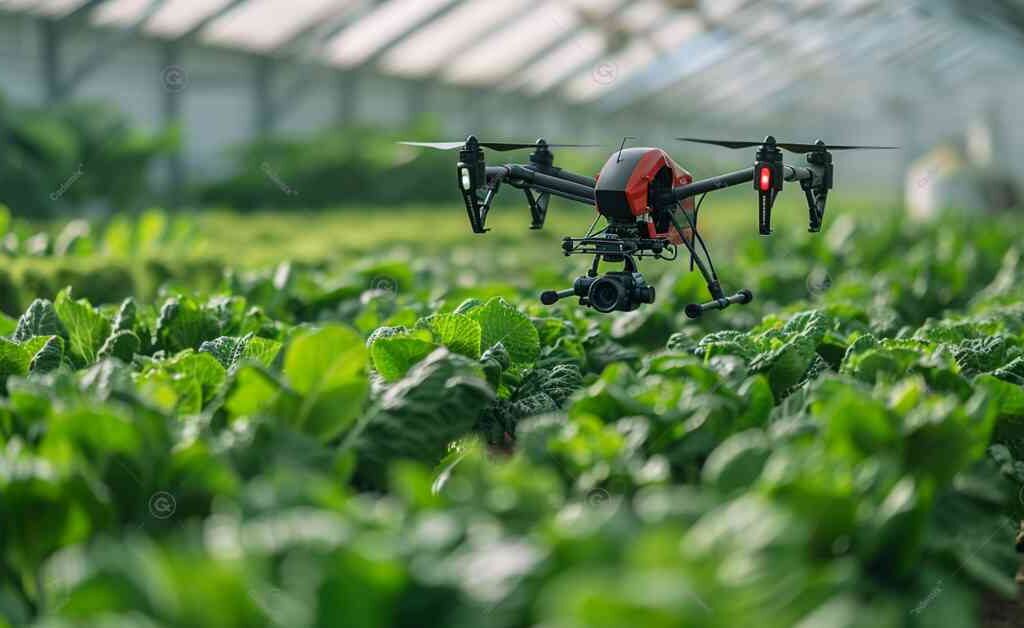
Impact of ICT on Third World Farmers
The impact of ICT on third world farmers is profound. By improving access to information, ICT tools can enhance farmers’ ability to make informed decisions, adopt new technologies, and improve productivity. For instance, weather forecasting services delivered via SMS can help farmers plan their planting and harvesting activities, reducing crop losses due to adverse weather conditions. Market price information can enable farmers to negotiate better prices for their produce and reduce exploitation by middlemen.
However, the digital divide remains a significant challenge, with many rural areas lacking reliable internet connectivity and digital literacy. Addressing these challenges requires investments in digital infrastructure, capacity building, and the development of user-friendly ICT solutions tailored to the needs of smallholder farmers. Ensuring that ICT tools are accessible and affordable can help bridge the digital divide and maximize the benefits of digital agriculture.
Sustainable Agricultural Practices
Agroecology
Principles of Agroecology
Agroecology is an approach to agriculture that emphasizes ecological principles and biodiversity to create sustainable and resilient farming systems. It integrates traditional knowledge with modern scientific insights to promote practices that enhance soil health, conserve water, and support biodiversity. Key principles of agroecology include diversifying crops, integrating livestock, and minimizing the use of synthetic inputs.
Intercropping, for example, involves growing multiple crops together to improve soil fertility, reduce pest pressure, and enhance overall productivity. Agroforestry, the integration of trees and shrubs into agricultural landscapes, can provide shade, reduce erosion, and improve soil health. Livestock integration allows for the recycling of nutrients through manure, enhancing soil fertility and reducing the need for chemical fertilizers.
Benefits and Challenges of Agroecology
Agroecology offers numerous benefits, particularly for smallholder farmers in developing countries. By reducing dependency on external inputs, such as synthetic fertilizers and pesticides, agroecology can lower production costs and reduce environmental impacts. Additionally, diversified farming systems are more resilient to climate variability and market fluctuations, enhancing food security and livelihoods.
Despite its benefits, the adoption of agroecology faces challenges. These include limited access to knowledge and training, resistance to change from traditional practices, and the need for supportive policies and incentives. Promoting agroecology requires investments in research, extension services, and capacity building to support farmers in transitioning to more sustainable practices. Policy frameworks that incentivize sustainable farming and reward ecosystem services are also essential for scaling up agroecology.
Conservation Agriculture
Introduction to Conservation Agriculture
Conservation agriculture is a set of soil management practices that minimize soil disturbance, maintain soil cover, and promote crop rotation. These practices aim to improve soil health, enhance water retention, and reduce erosion, making agriculture more sustainable and climate-resilient. Key principles of conservation agriculture include minimal tillage, cover cropping, and crop diversification.
Minimal tillage involves reducing or eliminating plowing to maintain soil structure and organic matter. Cover cropping entails growing cover crops, such as legumes or grasses, during off-seasons to protect the soil and improve fertility. Crop rotation, the practice of alternating different crops in the same field, helps break pest and disease cycles and improves soil health.
Benefits and Implementation Challenges
The benefits of conservation agriculture are significant. By maintaining soil structure and organic matter, minimal tillage improves soil fertility and water infiltration, reducing the need for chemical inputs and irrigation. Cover cropping protects the soil from erosion, enhances nutrient cycling, and provides habitat for beneficial organisms. Crop rotation reduces pest and disease pressure, enhancing crop health and yields.
Implementing conservation agriculture, however, requires overcoming several challenges. These include the initial costs of adopting new practices, the need for appropriate equipment, and the requirement for knowledge and training. Farmers may also face cultural and institutional barriers that discourage changes to traditional practices. Addressing these challenges requires supportive policies, financial incentives, and effective extension services to facilitate the adoption of conservation agriculture.
Organic Farming
Principles and Practices of Organic Farming
Organic farming is an agricultural system that emphasizes the use of natural processes and inputs to maintain soil fertility, control pests, and produce healthy crops. Organic farming avoids synthetic chemicals, such as fertilizers and pesticides, and relies on practices that promote ecological balance and biodiversity. Key principles of organic farming include crop rotation, composting, biological pest control, and the use of organic fertilizers.
Composting involves the decomposition of organic matter, such as crop residues and animal manure, to produce nutrient-rich compost that enhances soil fertility. Biological pest control uses natural predators, parasites, and microorganisms to manage pest populations. Organic fertilizers, such as manure and green manure, provide essential nutrients to crops without the adverse environmental impacts of synthetic fertilizers.
Advantages and Limitations
Organic farming offers several advantages. By avoiding synthetic chemicals, organic farming reduces the risk of environmental pollution, protects biodiversity, and enhances soil health. Organic produce often attracts premium prices in niche markets, providing economic benefits to farmers. Additionally, organic farming promotes sustainable and resilient agricultural systems that are better able to withstand environmental stresses.
However, organic farming also has limitations. It can be more labor-intensive and yield lower outputs compared to conventional farming, particularly during the transition period. Organic farmers may also face challenges in accessing organic inputs, certification processes, and markets. Addressing these limitations requires investments in research, infrastructure, and market development to support the growth of organic farming. Providing training and technical assistance to farmers can help them adopt organic practices and achieve certification.

Role of Government and Policy Interventions
Agricultural Policies
Formulating Effective Agricultural Policies
Government policies play a crucial role in shaping the agricultural sector and supporting farmers. Effective agricultural policies should focus on promoting sustainable practices, ensuring fair market access, and providing financial support. Policies that incentivize sustainable farming methods, such as agroecology and conservation agriculture, can encourage farmers to adopt practices that enhance productivity and environmental health.
Policies should also address the needs of smallholder farmers by providing access to inputs, training, and extension services. Support for research and development is essential for advancing agricultural technologies and practices. Additionally, policies that promote gender equality and support marginalized groups can enhance the inclusiveness and effectiveness of agricultural interventions.
Implementing Agricultural Policies
The implementation of agricultural policies requires coordinated efforts across multiple government agencies and stakeholders. This includes ensuring that policies are effectively communicated to farmers and providing the necessary support for their implementation. Monitoring and evaluation systems are essential for assessing the impact of policies and making necessary adjustments.
Governments should also engage with farmers and other stakeholders in
the policy-making process to ensure that policies are responsive to their needs and realities. Collaborative approaches that involve farmers’ organizations, civil society, and the private sector can enhance the effectiveness and sustainability of agricultural policies.
Subsidies and Financial Support
Importance of Subsidies in Agriculture
Subsidies play a vital role in supporting farmers by reducing the cost of inputs and providing financial incentives for sustainable practices. Subsidies for seeds, fertilizers, and irrigation equipment can help smallholder farmers increase their productivity and income. Additionally, subsidies that promote the adoption of environmentally friendly practices, such as organic farming and conservation agriculture, can enhance sustainability.
Crop insurance schemes are another important form of financial support that helps farmers manage risks associated with climate variability and market fluctuations. By providing a safety net, crop insurance can encourage farmers to invest in their farms and adopt innovative practices.
Challenges and Solutions
While subsidies and financial support are essential, they must be carefully designed to avoid unintended consequences. Poorly targeted subsidies can lead to market distortions, overuse of inputs, and environmental degradation. Ensuring that subsidies are targeted towards the most vulnerable farmers and promote sustainable practices is crucial.
Implementing effective subsidy programs requires robust administrative systems, transparency, and accountability. Digital platforms and mobile technologies can enhance the delivery and monitoring of subsidies, ensuring that they reach the intended beneficiaries. Additionally, integrating financial support with training and extension services can maximize the impact of subsidies on agricultural productivity and sustainability.
Land Tenure Reforms
Importance of Secure Land Tenure
Secure land tenure is a fundamental aspect of agricultural development, providing farmers with the confidence and incentives to invest in their land. Land tenure reforms that provide clear and enforceable property rights can increase productivity, improve access to credit, and enhance food security. Secure land tenure also supports environmental sustainability by encouraging farmers to adopt long-term soil and water conservation practices.
Implementing Land Tenure Reforms
Implementing land tenure reforms requires addressing legal, institutional, and social challenges. This includes updating land laws, strengthening land administration systems, and ensuring that land rights are recognized and protected. Community-based approaches that involve local stakeholders in the process can enhance the legitimacy and effectiveness of land tenure reforms.
Governments should also prioritize the land rights of marginalized groups, including women, indigenous communities, and smallholder farmers. Policies and programs that promote equitable access to land and address historical injustices are essential for achieving inclusive and sustainable agricultural development. Providing legal assistance and support for land registration can help ensure that land tenure reforms benefit all farmers.
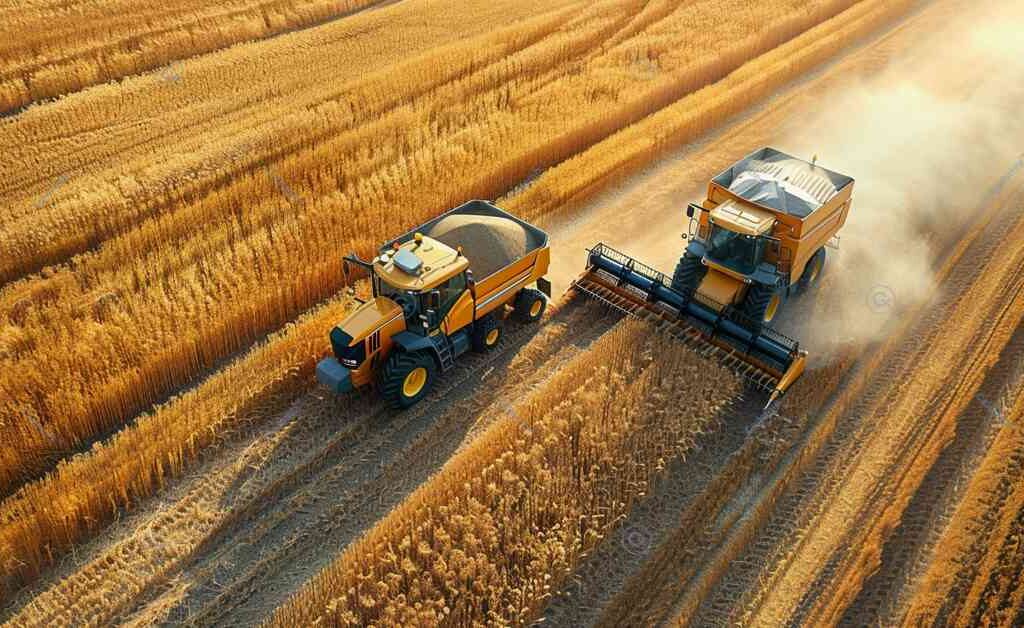
International Aid and Development Programs
United Nations Agencies
Role of the United Nations in Agricultural Development
United Nations agencies, such as the Food and Agriculture Organization (FAO) and the International Fund for Agricultural Development (IFAD), play a significant role in supporting agricultural development in third world countries. These agencies provide technical assistance, funding, and policy advice to help countries improve agricultural productivity, food security, and sustainability.
FAO, for example, supports countries in developing and implementing agricultural policies, promoting sustainable farming practices, and enhancing food security. IFAD focuses on rural development and poverty reduction, providing financial support for projects that improve agricultural productivity, access to markets, and rural livelihoods.
Impact of UN Programs
The impact of UN programs on agricultural development is significant. Through initiatives such as the FAO’s Farmer Field Schools, farmers receive hands-on training in sustainable farming practices, pest management, and soil health. IFAD-funded projects have helped smallholder farmers increase their productivity, improve their income, and enhance their resilience to climate change.
However, the effectiveness of UN programs depends on several factors, including the availability of funding, coordination with national governments, and the capacity of local institutions. Strengthening partnerships between UN agencies, governments, and civil society organizations is essential for maximizing the impact of development programs. Ensuring that programs are tailored to the specific needs and contexts of local communities is also crucial for their success.
Non-Governmental Organizations (NGOs)
Role of NGOs in Agricultural Development
Non-Governmental Organizations (NGOs) are instrumental in implementing grassroots development projects, providing training, and advocating for policy changes. NGOs work directly with farming communities to improve agricultural practices, enhance food security, and promote sustainable development. Organizations like Oxfam, CARE, and World Vision have extensive experience in supporting smallholder farmers through various programs and initiatives.
Impact of NGO Programs
NGO programs have had a significant impact on agricultural development in third world countries. For example, Oxfam’s Sustainable Livelihoods program supports smallholder farmers in adopting sustainable farming practices, improving market access, and increasing their income. CARE’s Farmer Field and Business Schools provide training on agricultural techniques, business skills, and gender equality, empowering farmers to improve their productivity and livelihoods.
The success of NGO programs depends on their ability to engage with local communities, build trust, and ensure the participation of marginalized groups. Strengthening the capacity of local organizations and promoting community-led development approaches are essential for the sustainability and impact of NGO programs. Additionally, NGOs can play a crucial role in advocating for policy changes that support smallholder farmers and promote sustainable agricultural development.
Public-Private Partnerships
Role of Public-Private Partnerships in Agriculture
Public-Private Partnerships (PPPs) leverage the strengths of both sectors to address agricultural challenges and promote development. PPPs can provide funding for infrastructure projects, promote the adoption of new technologies, and improve market access for smallholder farmers. By combining the resources and expertise of the public and private sectors, PPPs can drive innovation and enhance the sustainability of agricultural systems.
Examples and Impact of PPPs
Several successful PPPs have demonstrated the potential of this approach. For example, the Alliance for a Green Revolution in Africa (AGRA) is a partnership that includes governments, private companies, and international organizations working together to improve agricultural productivity and food security in Africa. AGRA supports the development and dissemination of improved seed varieties, access to finance, and market linkages for smallholder farmers.
Another example is the Sustainable Trade Initiative (IDH), which partners with private companies, governments, and NGOs to promote sustainable supply chains for commodities such as cocoa, coffee, and palm oil. IDH programs focus on improving the livelihoods of smallholder farmers, promoting sustainable farming practices, and ensuring fair trade.
The impact of PPPs depends on their ability to align the interests of different stakeholders, ensure transparency and accountability, and promote inclusive development. Effective PPPs require clear governance structures, strong partnerships, and a focus on long-term sustainability. By addressing these factors, PPPs can play a crucial role in advancing agricultural development and improving the livelihoods of smallholder farmers.
Case Studies of Successful Agricultural Initiatives
Asia
The System of Rice Intensification (SRI) in India
The System of Rice Intensification (SRI) is a set of practices designed to increase rice yields while reducing water usage. SRI involves transplanting younger seedlings, spacing plants wider apart, and using less water. This method has been widely adopted in India, leading to significant increases in productivity and water savings.
The success of SRI in India can be attributed to several factors. First, the involvement of local farmers in the development and adaptation of SRI practices has ensured that the methods are suitable for local conditions. Second, support from government and non-governmental organizations has provided the necessary training and resources for farmers to adopt SRI. Finally, the clear benefits of SRI, including higher yields and reduced water usage, have encouraged widespread adoption.
The impact of SRI extends beyond increased productivity. By reducing water usage, SRI contributes to the sustainability of water resources and enhances the resilience of rice farming systems to climate variability. Additionally, the higher yields achieved through SRI can improve food security and income for smallholder farmers. The success of SRI in India demonstrates the potential of innovative agricultural practices to address critical challenges and improve livelihoods.
Integrated Pest Management (IPM) in Vietnam
Vietnam has successfully implemented Integrated Pest Management (IPM) practices to reduce the reliance on chemical pesticides and improve crop health. IPM involves the use of biological control methods, cultural practices, and the judicious use of chemical pesticides to manage pest populations. By promoting a holistic approach to pest management, IPM reduces the environmental and health impacts of pesticide use.
The implementation of IPM in Vietnam has involved extensive training and capacity building for farmers. Farmer Field Schools have played a crucial role in educating farmers on IPM principles and practices. These schools provide hands-on training and promote experiential learning, enabling farmers to develop the skills and knowledge needed to implement IPM effectively.
The benefits of IPM in Vietnam are significant. By reducing the use of chemical pesticides, IPM has improved the safety of agricultural products and reduced environmental pollution. The use of biological control methods has also enhanced the sustainability of pest management practices. Additionally, the adoption of IPM has led to improved crop health and higher yields, contributing to food security and income generation for smallholder farmers.
Africa
Agroforestry in Kenya
Agroforestry, the integration of trees and shrubs into agricultural landscapes, has been promoted in Kenya to improve soil fertility, provide additional income sources, and enhance biodiversity. Agroforestry practices include planting trees on farmland, establishing woodlots, and integrating trees with crops and livestock.
The success of agroforestry in Kenya can be attributed to several factors. First, the involvement of local communities in the planning and implementation of agroforestry projects has ensured that the practices are culturally and environmentally appropriate. Second, support from government and non-governmental organizations has provided the necessary resources and training for farmers to adopt agroforestry. Finally, the clear benefits of agroforestry, including improved soil fertility, increased income, and enhanced biodiversity, have encouraged widespread adoption.
The impact of agroforestry in Kenya is significant. By improving soil fertility, agroforestry enhances agricultural productivity and reduces the need for chemical fertilizers. The additional income from tree products, such as fruits, timber, and firewood, diversifies farmers’ income sources and improves their livelihoods. Additionally, agroforestry practices contribute to environmental sustainability by enhancing biodiversity, reducing soil
erosion, and sequestering carbon. The success of agroforestry in Kenya demonstrates the potential of integrated farming systems to address multiple challenges and improve livelihoods.
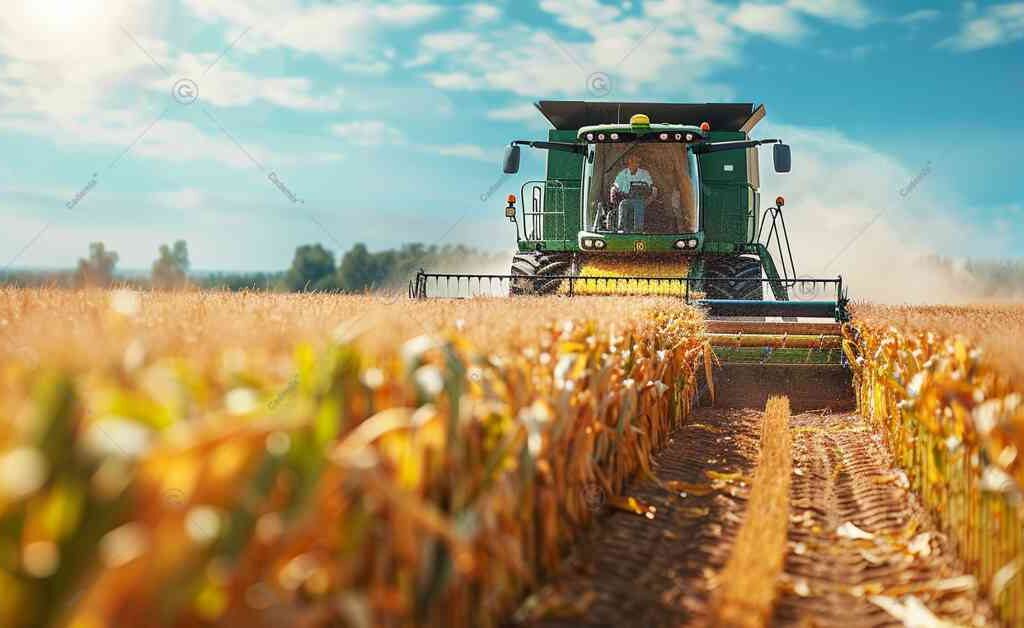
Water Harvesting Techniques in Ethiopia
In arid regions of Ethiopia, water harvesting techniques such as terracing, contour bunds, and the construction of micro-dams have improved water availability for agriculture. These practices capture and store rainwater, reduce soil erosion, and enhance soil moisture, enabling farmers to maintain productivity even in dry conditions.
The implementation of water harvesting techniques in Ethiopia has involved extensive community participation and capacity building. Local communities have been actively involved in the planning and construction of water harvesting structures, ensuring that the practices are suitable for local conditions. Support from government and non-governmental organizations has provided the necessary resources and training for farmers to adopt water harvesting techniques.
The benefits of water harvesting in Ethiopia are significant. By improving water availability, these techniques enhance agricultural productivity and resilience to drought. The reduction in soil erosion and improved soil moisture contribute to soil fertility and long-term sustainability. Additionally, the increased water availability supports multiple uses, including livestock watering and domestic use, enhancing overall community well-being. The success of water harvesting in Ethiopia demonstrates the potential of innovative water management practices to address critical challenges and improve livelihoods.
Latin America
Organic Coffee Farming in Colombia
Colombia has become a leader in organic coffee production, with farmers adopting sustainable practices that reduce chemical use and improve soil health. Organic coffee farming involves the use of organic fertilizers, biological pest control, and shade-grown practices that enhance biodiversity and protect the environment.
The success of organic coffee farming in Colombia can be attributed to several factors. First, the involvement of farmer cooperatives has provided the necessary support and resources for farmers to transition to organic practices. Second, certification programs have enabled farmers to access premium markets and receive higher prices for their organic coffee. Finally, the clear environmental and economic benefits of organic farming have encouraged widespread adoption.
The impact of organic coffee farming in Colombia is significant. By reducing the use of chemical inputs, organic farming protects soil health, water quality, and biodiversity. The premium prices for organic coffee provide economic benefits to smallholder farmers, improving their income and livelihoods. Additionally, organic farming practices enhance the sustainability and resilience of coffee farming systems. The success of organic coffee farming in Colombia demonstrates the potential of sustainable agricultural practices to address multiple challenges and improve livelihoods.
No-Till Farming in Brazil
No-till farming is a conservation agriculture practice that involves planting crops without disturbing the soil through tillage. This practice helps maintain soil structure, improve soil fertility, and reduce erosion. Brazil has become a leader in no-till farming, with millions of hectares of cropland managed using this technique.
The success of no-till farming in Brazil can be attributed to several factors. First, the involvement of research institutions and farmer organizations has provided the necessary support and resources for farmers to adopt no-till practices. Second, government policies and incentives have promoted the adoption of conservation agriculture. Finally, the clear environmental and economic benefits of no-till farming have encouraged widespread adoption.
The impact of no-till farming in Brazil is significant. By maintaining soil structure and fertility, no-till farming enhances agricultural productivity and reduces the need for chemical fertilizers. The reduction in soil erosion and improved water retention contribute to environmental sustainability. Additionally, no-till farming practices sequester carbon, mitigating climate change. The success of no-till farming in Brazil demonstrates the potential of conservation agriculture to address multiple challenges and improve livelihoods.
Future Prospects and Recommendations
Enhancing Access to Technology and Innovation
Improving access to technology and innovation is essential for enhancing agricultural productivity and sustainability in developing countries. This includes promoting the adoption of precision agriculture, biotechnology, and ICT tools. Targeted investments in research and development, capacity building, and infrastructure are crucial for ensuring that smallholder farmers can benefit from these technologies.
Policies and programs that promote affordable and scalable technological solutions can enhance the accessibility and adoption of innovations. Public-private partnerships and international collaborations can play a crucial role in advancing agricultural technology and innovation. Additionally, fostering a culture of innovation and entrepreneurship in agriculture can drive the development and dissemination of new technologies and practices.
Promoting Sustainable Agricultural Practices
Promoting sustainable agricultural practices is essential for ensuring long-term food security and environmental sustainability. This includes supporting agroecology, conservation agriculture, and organic farming. Policies and programs that incentivize sustainable farming methods and reward ecosystem services can encourage farmers to adopt sustainable practices.
Investments in training and extension services are crucial for supporting farmers in transitioning to sustainable practices. Community-led approaches that involve local stakeholders in the planning and implementation of sustainable agriculture projects can enhance their effectiveness and sustainability. Additionally, integrating traditional knowledge with modern scientific insights can promote context-specific and culturally appropriate sustainable practices.
Strengthening Agricultural Policies and Governance
Effective agricultural policies and governance are essential for supporting farmers and promoting sustainable development. This includes formulating policies that address the needs of smallholder farmers, promote gender equality, and support marginalized groups. Ensuring that policies are effectively implemented and monitored is crucial for their success.
Strengthening agricultural governance requires enhancing the capacity of government institutions, promoting transparency and accountability, and ensuring stakeholder participation in the policy-making process. Collaborative approaches that involve farmers’ organizations, civil society, and the private sector can enhance the effectiveness and sustainability of agricultural policies.
Enhancing International Cooperation and Aid
International cooperation and aid play a crucial role in supporting agricultural development in third world countries. This includes technical assistance, funding, and policy advice from international organizations, governments, and NGOs. Enhancing the coordination and alignment of international aid with national priorities and local needs is essential for maximizing its impact.
Promoting public-private partnerships and multi-stakeholder collaborations can leverage the strengths of different sectors and enhance the sustainability of development initiatives. Ensuring that aid programs are inclusive and responsive to the needs of marginalized groups can enhance their effectiveness and equity. Additionally, promoting knowledge sharing and learning across countries and regions can drive innovation and improve agricultural practices.
Conclusion
Agriculture remains a vital sector for the livelihoods and food security of millions of people in developing countries. Third world farmers face numerous challenges, including economic constraints, environmental degradation, and social inequalities. However, there are also significant opportunities for improving agricultural productivity and sustainability through technological innovations, sustainable practices, and supportive policies.
By addressing the challenges and leveraging the opportunities, developing countries can enhance the resilience and productivity of their agricultural systems. This requires coordinated efforts from governments, international organizations, NGOs, and the private sector. Promoting inclusive and sustainable agricultural development can improve the livelihoods of smallholder farmers, enhance food security, and contribute to broader economic and social development.

Conclusion and Call to Action
While local farm jobs offer comfort and familiarity, exploring international opportunities can provide substantial professional and personal benefits. Higher wages, exposure to innovative practices, and the chance for significant career advancement make global farm jobs a valuable option for job seekers. By broadening their search, agricultural professionals can gain new perspectives, contribute to knowledge exchange, and support the democratization of information in the farming sector.
If you are interested in expanding your horizons and exploring farm jobs abroad, consider joining the Cademix Acceleration Program. Our consultancy services and educational programs are designed to support job seekers in navigating the complexities of the global job market and achieving their career goals.
Discover our Cademix Career Autopilot program and learn how we can help you secure international farm jobs and advance your agricultural career. For additional resources and job listings, visit Indeed, LinkedIn, and AgriJobFinder.

